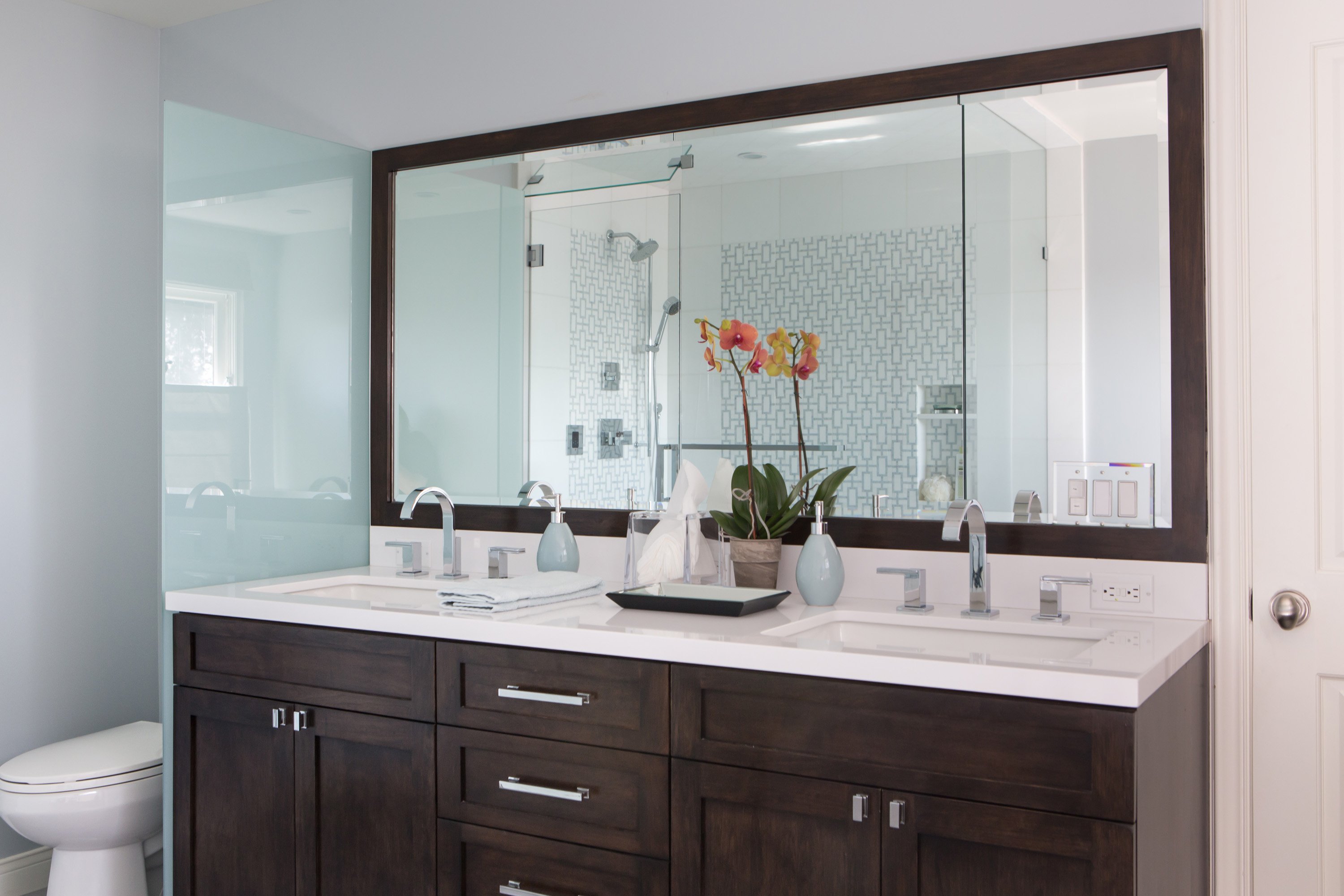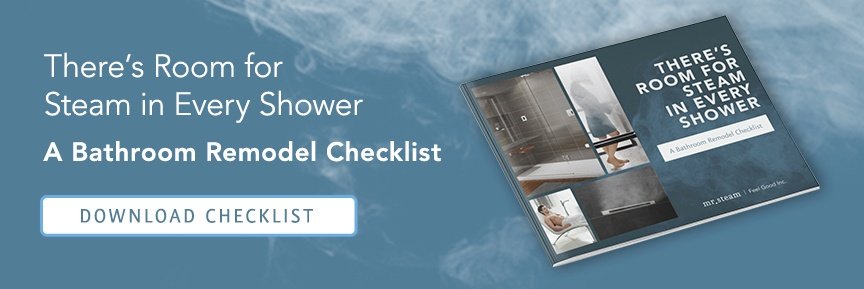Bathroom Remodels for Thriving While You Age in Place
There are many reasons homeowners decide it’s time to remodel a bathroom. Some are accommodating the needs of a growing family. Others want to freshen dated décor—ugh, that brown 1970’s tile!—fix wear-and-tear, or want to upgrade from builder-grade materials.
But the smartest homeowners? Those are the ones who use the opportunity of a bathroom remodel as a way to think ahead and anticipate future needs. What will work for your lifestyle today, and what can serve you and your loved ones equally well in the coming decades?
For many Americans, thinking ahead means contemplating aging in place. There has been a trend, especially among Baby Boomers, in older adults staying active and wanting to stay in their own homes. This demographic is rethinking the aging adult community, and seeking other options.
According to a 2019 AARP survey, three out of four adults age 50 and older desire to stay in their homes and communities as they age. But at least one-third of adults who own their own homes also expect their homes to need major modifications to accommodate their needs while they are aging in place.
The good news is that a renovation creates a more accessible bathroom with features that can be enjoyed by people of all ages—from older relatives to children. Here’s what to add to your bathroom remodeling project so you can make the most of your home, and thrive as you get older.
To help guide your measurements, we'll also include some of the requirements the Americans with Disabilities Act put into place for various installations. These aren't necessary to adhere to in the home, but they can give you a good point of reference to maximize accessibility with your bathroom remodel.
Zero-Threshold Shower
Consider converting your shower into a zero-threshold or curbless shower. These barrier-free showers allow for more accessibility while creating a comfortable experience.
With a zero-threshold shower, the shower floor is flush with the bathroom floor—there is no sill to step over. It looks modern and fresh today. But it’s also safer as we age, because older adults have a harder time lifting their feet and balancing to step into a traditional shower enclosure. Not only does zero-threshold shower design reduce the risk of falling, it also allows for a wheelchair, walker or transfer chair to be used, should that become necessary.

Non-slip Floors
According to Consumer Affairs, more than one in three people over the age of 65 fall each year, and falling in the bathroom is especially common due to the slippery, hard surfaces.
For bathroom flooring, consider smaller tiles, which help create a grippy surface, or floors that have been specially treated with a non-slip application, or rubber as a material. While on the pricier side, rubber flooring doesn’t get slick when wet and has a softer surface, which both pads delicate feet and provides a cushion if someone does take a spill.
Whichever type of flooring you go with, be consistent. Try to reduce the number of areas where there is a transition between materials—those spots are especially likely to cause trips.
Non-slip mats or decals on a shower floor can also help reduce slipping, Consumer Affairs reports, and provide visual cues to help with depth perception. And be sure to use a non-slip bathmat instead of a towel to dry off on, as a towel can slide right out from under a bather and cause a fall.
Grab Bars
Here’s a common scenario for a fall: an older adult feels a little wobbly and grabs onto a towel rack, which simply isn’t designed to hold the weight of a human.
A safer solution: Install grab bars where people naturally need more balance: at shower entrances and near the toilet. These should be made of slip-resistant materials and securely attached to the wall into the studs, so they can provide truly sturdy support. Color contrasting the bars from the wall helps them be seen easily. (Check out our story, “Creating a Fabulous and Safe Bathroom for All Ages.”)
Another option is a tension pole installed from floor to ceiling and provides multiple angles and heights to grab onto. (No pole dancing in the bathroom, please. Save it for the basement.)
A wall-mounted folding teak seat provides comfort and safety while bathing inside the shower enclosure. A hinged model folds up the seat to make more room, which we need as we age. Also, consider mounting dispensers for soap and shampoo so that children or seniors don’t have to reach and bend to grab them.
You may want to go by ADA measurements when measuring your grab bars. ADA recommends installing grab bars with a minimum width of 36 inches. They should also sit approximately 33 to 36 inches above the floor.
Comfort-Height Toilets
Higher toilets, which run three to five inches taller than standard toilets, really put the “throne” in throne. They are safer for seniors, but also are more comfortable for tall people, helpful for the disabled, and just generally easier to use.
Higher toilets come in a variety of models that are sleek and water-efficient, adding beauty and utility to the bathroom. Some styles even have seats that softly close on their own after use, so if something goes bump in the night… well, you know it’s not your toilet.
Based on ADA standards, your toilet seat should ideally be around 17 to 19 inches high, with a 60-inch diameter. In addition to toilet height, consider the height of your toilet paper dispenser, which the ADA recommends you install 15 to 19 inches above the floor.
Higher Counters
According to the Center of Design for an Aging Society, sink counters should be at least 36 inches high for seniors. A sink cabinet, as opposed to a pedestal sink, adds more stability (and storage space). As they age, homeowners can add non-slip adhesive strips along the top of the sink area for help with balance.

Wider Doorways
If someone uses a walker, cane, or wheelchair, it’s more accessible if you widen the doorway into the bathroom. One method is to rehang the door using swing clear hinges. With this style of hinge, the door swings behind the frame rather than in the frame, adding about two inches of clearance.
Another option is to reverse the direction the door opens, so that it goes out into a hallway or bedroom instead of swinging into a smaller bathroom.
Lastly, some homeowners remove the whole kit and caboodle: door, doorframe, and trim. If you don’t need a door for privacy, this sleek look also cleverly provides up to four more inches of clearance into the bathroom.
According to ADA guidelines, your doorway should be at least 32 inches wide, but you may want to extend that to 36 to ensure wheelchair accessibility. This may apply to the rest of your home remodeling project as you modify other doorways for wheelchairs or other assistive equipment.
Plenty of Lighting
The Center of Design for an Aging Society suggests home designs that provide natural light. “Continued exposure to daylight is important to prevent two common problems of older people, sleep disorders and frail bones.” So, considering that second half of life, incorporate windows or skylights in the bathroom remodel design.
Inside a steam shower enclosure, go for recessed lighting specially created for use in damp locations. A steam shower can also have natural lighting, with a window inside the enclosure or a glass top. You can even have a skylight or multiple skylights over a steam shower. For more on how to use natural light and for recommendations on generator size and waterproof barriers for windows, check out this story on how to use windows in your steam shower project.
Wellness Benefits of Steam Showers
Today’s older adults don’t accept that pain and stiffness are unavoidable during the aging process—in fact, they are practicing more self-care than ever. They’re focused on maintaining their mobility, muscle mass, and strong bones. You’ll find active seniors working with fitness trainers, hitting the gym or yoga studio, or running a 10k race.
This concept of “active aging” is one of the reasons that residential steam showers have become such an in-demand feature during a bathroom remodel. A steam shower is an investment that pays you back with its many health and wellness benefits. These may include:
- More lustrous hair and skin. Heat therapy nourishes hair and skin by increasing circulation to the skin and scalp.
- Deeper, restorative sleep. Changes to sleep patterns are common during the normal aging process, so anything that can make it easier to fall and stay asleep is key.
- Lowering stress levels, which can boost immunity. According to the Cleveland Clinic, stress causes the body to produce too much of the hormone cortisol. ""Eliminating or modifying these factors in one's life is vital to protect and augment the immune response … is necessary to buffer the inevitability of the aging process."
- The moist heat of the steam may improve circulation throughout the body.
- Heat is also beneficial in promoting muscle and ligament flexibility.
- Steam also may promote better respiratory health, by loosening secretions and promoting sinus drainage.
>>> See the 40 Benefits of Steam for Your Health
Why wait until you’re older to add beneficial details like safer flooring, better lighting, and a steam shower into your home? They can fit into an existing design without standing out, and many of these improvements can be enjoyed no matter what season of life you are in.
Want more? Read “Home Upgrades that Will Impact Your Health & Wellness Before and During Retirement.”

 SEARCH
SEARCH
 FIND A DEALER
FIND A DEALER







